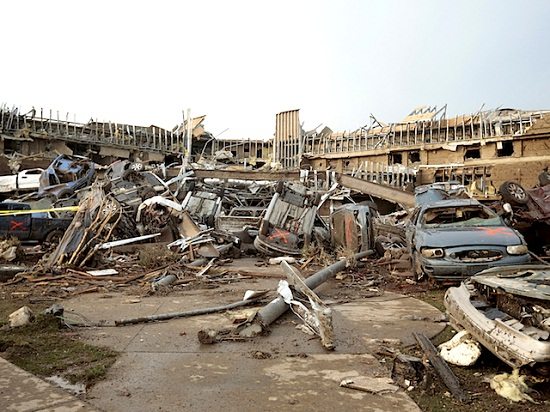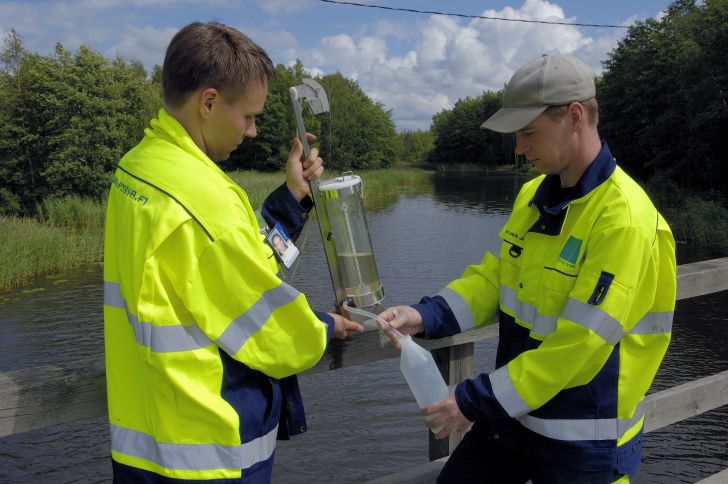FEMA Storm Shelter Grants – Storm shelters are one of the many things people tend to neglect when they are building a house. Although most of the times having a basement is sufficient, but many death incidences happen to people sheltering in their basement during major storms, hurricanes or tornadoes.
A government agency that is responsible to act swiftly during major disasters like hurricanes, tornadoes or major storms is the Federal Emergency Management Agency (FEMA). They utilize the Hazard Mitigation Grant Program to help people who lose their basic necessities, which may include housing and storm shelters.
About FEMA Grants
In regards to FEMA grants, individual home and business in general cannot directly apply for any of the FEMA grant; but state, local and tribal nonprofit groups and governments are eligible for this grant. Some of the project examples are raising home level project that can reduce flooding risk and also creating public storm shelters.
There are no exact standard for the FEMA storm shelter grant. The system is based on cost coverage percentage. The grant recipient or the state should cover at least 25 percent of the total cost; which means that the FEMA grant will cover up to 75 percent of the total cost. It is also important to note that for each declared disaster; the fund coming out for the FEMA grant will be limited to 15 percent from the total annual budget (with some exception).
FEMA Storm Shelter Grants Procedure
The first thing to remember is the FEMA Grants will only be accessible after the president declares a disaster. When this happens, states can start to request for the grant. Anyone who are in need for storm shelter should go to their respective local government officials. From there, the agency will contact their State’s Hazard Mitigation Officers. The procedure goes on to the region’s FEMA officers. So as you can see, there are several steps to complete. However, the review time depends on the complexity of each project.
Getting the FEMA Storm Shelter Grant
If you want to have a bigger chance on getting the FEMA storm shelter grant, you should consider making a community appeal to your local government officials. In other words, you should collect at least 20 housing units from low to moderate income families. Your area should also be inside a State that’s been hit by a major storm, tornado, or hurricane in the last three years. You should also remember that you have to apply for the grant BEFORE you start building, purchasing or installing a storm shelter. If you have started the construction, then your eligibility is void automatically.
The storm shelter is usually installed in manufactured home parks, and the size will be decided depending on the number of people it should protect. It may also help to have a tornado siren installed in your city so that the FEMA officials (http://www.fema.gov/) can tell that you’ve done something to protect your community. To check the status of the application, you should contact your State’s Hazard Mitigation Officers.
Other FEMA Shelter Grants
Grant funds are available for projects related to emergencies or disasters, both before and after they occur. These funds are available to support essential recovery efforts, innovative research, and various other important programs.
FEMA primarily uses grants to provide federal funding to eligible groups. This includes state, local, tribal, and territorial governments, certain private non-profits, individuals, and institutions of higher learning. These grants are a key way that FEMA distributes financial assistance to those in need.
If you need more than just FEMA storm shelter grants information, here are some more programs to help you:
EFSP National Board
The Emergency Food and Shelter Program (EFSP) National Board distributes funds to counties and cities across the country. These funds are available to help local social service organizations that focus on feeding, sheltering, and providing essential resources to people who are homeless or at risk of homelessness or hunger. The funds are specifically for non-disaster-related emergencies and are useful for a wide variety of services.
The EFSP National Board allocates these funds to local boards in areas that qualify, based on the latest national data on population, unemployment, and poverty. Once the local boards receive the funds, they inform their communities about the available grants, review applications, and distribute grants to organizations that offer services to those in need. These services may include:
- Providing food through served meals or groceries.
- Offering lodging in shelters or hotels.
- Providing rental or mortgage assistance to prevent evictions.
- Paying utility bills to avoid service cut-offs.
- Covering transportation costs related to providing food or shelter.
- Purchasing supplies and equipment needed to feed or shelter people.
Shelter and Services Program (SSP)
The Shelter and Services Program (SSP) is one of FEMA programs in partnership with U.S. Customs and Border Protection (CBP). The program provides financial assistance to non-federal entities to offer humanitarian services to noncitizen migrants after they are released from the Department of Homeland Security (DHS). The goal is to help CBP ensure that noncitizen migrants are released from short-term holding facilities in a safe, organized, and humane manner.
For Fiscal Year (FY) 2024, there are two funding opportunities under the SSP for eligible applicants:
1. Allocated (SSP-A)
To qualify for SSP-A, applicants must be one of the entities listed in Section B of the FY24 Notice of Funding Opportunity (NOFO).
- Round 1: Awards will be announced on April 12, 2024.
- Round 2: Awards will be announced on or before September 30, 2024.
Application Deadlines:
- Round 1: Apply by Friday, April 26, 2024, at 3 p.m. ET.
- Round 2: Apply by Wednesday, September 11, 2024, at 3 p.m. ET.
2. Competitive (SSP-C)
To be eligible for SSP-C, applicants must meet the criteria outlined in Section C of the FY24 NOFO. Eligible entities include:
- Local governments
- Indian Tribes
- Nonprofit organizations
- U.S. states, Puerto Rico, and the District of Columbia
SSP-C awards were released on August 28, 2024.
Application Deadline:
- Apply by Monday, June 17, 2024, at 3 p.m. ET.
Hopefully this FEMA storm shelter grants information is pretty clear.
How to Apply for SSP Funding
Applications for Fiscal Year (FY) 2024 SSP-A and SSP-C funding are now closed. However, guidance is available for those applying for Round 2 funding under the FY 2024 SSP-A.
If you are a recipient listed in the amended FY 2024 SSP-A Notice of Funding Opportunity (NOFO) under the Round 2 funding allocation table, you must submit an amendment to your existing FY 2024 SSP-A award in FEMA GO to apply for reserve funds. The deadline to submit this amendment is by 3 p.m. ET on September 11, 2024.
To ensure your amendment is submitted correctly, follow these steps:
- Log in to FEMA GO.
- Complete the amendment submission before the deadline.
For more detailed information on how to submit amendments, refer to Section D, “Application Submission Information,” in the amended FY 2024 SSP-A NOFO.
Annual Funding Totals
For FY 2024, the total funding available is $650 million, distributed between SSP-A and SSP-C:
SSP-A Funding:
- Round 1: $275 million
- Round 2: $40.87 million
- Total: $300 million
Note: Unclaimed awards from SSP-A Round 1 were included in the Round 2 funding.
SSP-C Funding:
- Total: $340.9 million
You can view the FY24 SSP-A and SSP-C award allocations online.
For FY 2023, the total funding available was $363.8 million, broken down as follows:
- Tranche 1: $291 million
- Tranche 2: $77.3 million
- Reserve Funding: $12.2 million
You can also view the FY23 award allocations online.
Conclusion
The FEMA Storm Shelter Grant is an essential program to enhance the safety and security of communities vulnerable to severe weather events, such as tornadoes, hurricanes, and major storms. While basements may provide some protection, they often fall short during extreme conditions, leading to tragic outcomes. This reality underscores the importance of having dedicated storm shelters, which are very crucial to save lives.
Administered through the Federal Emergency Management Agency (FEMA), these grants are primarily available to state, local, and tribal governments, as well as nonprofit organizations, rather than individual homeowners or businesses. The grants are part of FEMA’s broader Hazard Mitigation Grant Program, which seeks to reduce the risks and impacts of natural disasters by funding projects like public storm shelters.
A key aspect of the FEMA Storm Shelter Grant is its cost-sharing structure, where FEMA covers up to 75% of the project cost, leaving the remaining 25%. The fund is from the state of the grant recipient. This approach ensures that communities invest in their safety while receiving substantial federal support. However, the availability of these funds is contingent upon the declaration of a disaster by the President, making timely application crucial.
Communities seeking to increase their chances of securing a FEMA Storm Shelter Grant should consider mobilizing collective efforts, especially in areas recently impacted by major storms. By pooling resources and applying as a community, particularly in low to moderate-income neighborhoods, the likelihood of receiving funding increases.
References :
- Federal Emergency Management Agency : fema.gov
- Disaster Assistance : disasterassistance.gov
- Federal Emergency Management Agency : en.wikipedia.org/wiki/Federal_Emergency_Management_Agency
- Images: dfw.cbslocal.com, tornadotoughshelters.com





Live in a small town, a lot of mobile homes and elderly people. I personally live in the only subdivision, mostly retired people, only one basement home in here. This was once a pasture. Mostly level terrain. Should a storm hit this town, none of us would have a place to go. The surrounding towns have storm shelters. We are the smallest, approx. 272 adults plus children. My husband is on the Town Council.
Can you show me how to get a Grant.